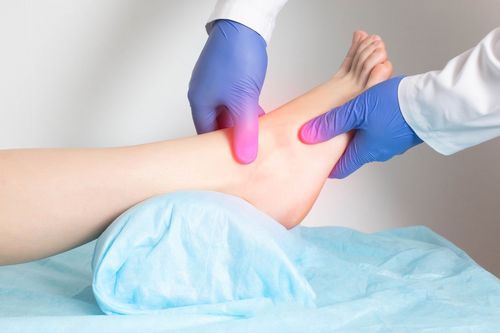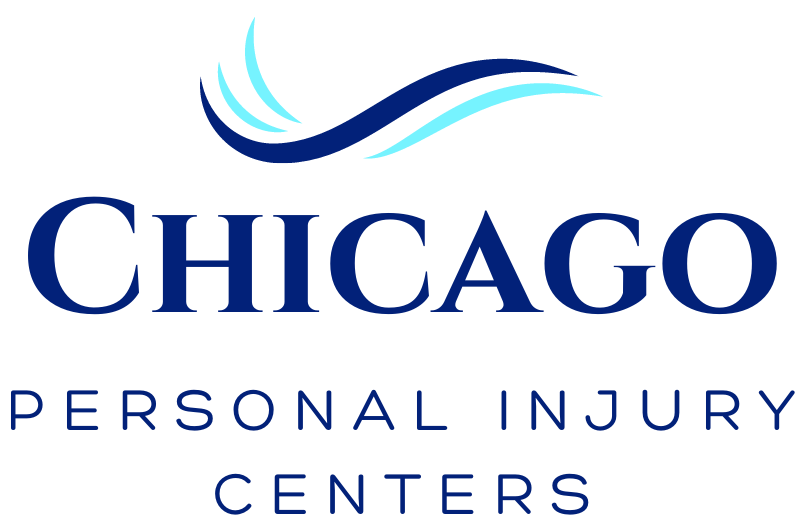Muscle sprain and strain are common injuries resulting from various forms of physical activity that cause pain and swelling around the affected muscle. These injuries can affect athletes when running or jumping or could result from accidents such as slips and falls or involving automobiles. Although they may share similarities, the two injuries differ regarding the body tissues affected and available treatment and recovery procedures.
At the Chicago Personal Injury Centers, we focus squarely on diagnosing the injury, including its location and the tissues affected, before recommending the appropriate treatment. We also encourage individuals experiencing pain or symptoms related to muscle strains and sprains to seek professional help from qualified medical experts for diagnosis and treatment. Call us today at (773) 482-5800 to schedule an appointment.
Muscle Sprains and Strains – Explained
A muscle sprain and a muscle strain are both forms of soft tissue injuries, but they differ in the specific tissues affected and the nature of the injury:
Muscle Sprain
A muscle sprain occurs when a ligament, which is a tough band of fibrous tissue connecting bones to other bones, is stretched or torn. Ligaments provide stability and support to joints. A sprain typically occurs due to sudden twisting, stretching, or a forceful impact on a joint, causing the ligament to stretch beyond its normal range. Common areas for sprains include the ankles, wrists, and knees.
Muscle Strain
A muscle strain, also known as a pulled muscle, happens when a muscle or tendon (fibrous tissue that attaches muscles to bones) is stretched or torn. This occurs when the muscle is overworked, overstretched, or subjected to sudden and excessive force. Muscle strains can occur in any part of the body but are often seen in the lower back, neck, hamstrings, and shoulders.
In both cases, the severity of the injury can range from mild (Grade I) involving minor stretching or microscopic tearing of the fibers, to moderate (Grade II) involving partial tearing of the tissue, to severe (Grade III) involving a complete tear or rupture of the ligament, muscle, or tendon.
It’s important to seek medical attention for an accurate diagnosis and appropriate treatment plan to promote healing and prevent complications or long-term damage.
Causes Of Muscle Strains and Sprains
Muscle sprains and strains can occur due to a variety of factors and activities, often involving sudden or excessive stress on the muscles, tendons, or ligaments. Here are the common causes of muscle sprains and strains:
- Sudden Movement or Force: A sudden, forceful movement or impact on a muscle or joint can cause a sprain (ligament injury) or a strain (muscle or tendon injury). This can happen during a fall, collision, or sudden twist or turn.
- Overuse or Repetitive Movements: Overexerting a muscle or repeating the same movement over time can strain the muscle or tendon. This is common in sports, manual labor, or any activity that requires repetitive motion.
- Poor Warm-up or Stretching: Inadequate warm-up before physical activity or inadequate stretching can make muscles more susceptible to injury during exercise.
- Muscle Fatigue: Muscles that are tired or fatigued are more prone to strain because they are less able to absorb the stress of physical activity.
- Improper Lifting Technique: Lifting heavy objects using improper technique, such as lifting with the back instead of the legs, can strain the muscles in the back and neck.
- Weak Muscles or Imbalances: Weak muscles or muscle imbalances can make certain areas of the body more susceptible to injury. When some muscles are weaker than others, they may not provide adequate support to the joints and can lead to injury.
- Tight Muscles: Muscles that are tight or inflexible are more likely to become strained during physical activity, as they have limited range of motion.
- Sports Injuries: Participating in sports without proper training, technique, or safety precautions can result in muscle sprains and strains. This is especially common in contact sports or those with sudden, intense movements.
- Accidents or Trauma: Accidental falls, collisions, or trauma from accidents can cause sudden and severe muscle sprains or strains.
- Previous Injuries: Having a history of muscle sprains or strains can increase the risk of re-injury in the same area.
Understanding these potential causes can help individuals take appropriate precautions, such as proper warm-up, conditioning, and technique, to reduce the risk of muscle sprains and strains during physical activities. If a sprain or strain does occur, prompt treatment and rehabilitation are essential for a timely and effective recovery.
What Are Some Scenarios Where Different Muscles May Sprain Or Strain?
Muscle strains and sprains can occur in various scenarios, often related to specific activities, movements, or accidents. Here are some common scenarios where different muscles may experience strain or sprain:
Sports Injuries
- Soccer or Football: Strained hamstring muscles may occur during a sudden sprint or change in direction.
- Weightlifting: Straining the lower back muscles may happen when lifting heavy weights with improper technique.
- Basketball: Ankle sprains can occur during jump landings or sudden changes in direction.
Workplace Injuries
- Lifting Heavy Objects: Straining the back muscles or experiencing a back sprain can occur during improper lifting or moving heavy items at work.
- Repetitive Movements: Workers who perform repetitive tasks, such as assembly line workers, can experience strains in the neck, shoulders, or wrists.
Daily Activities
- Slipping or Falling: Spraining the wrist or ankle can happen during a slip or fall.
- Car Accidents: Sudden movements during a car accident can cause various muscle strains, particularly in the neck and back.
Fitness and Exercise
- Running or Jogging: Strains in the calf muscles may occur due to sudden acceleration or overuse during a run.
- Aerobic Exercises: Overexertion during aerobic workouts can lead to strains in multiple muscle groups.
- Inadequate Warm-up: Not properly warming up before exercise can lead to strains in various muscles due to insufficient blood flow and flexibility.
Household Tasks
- Gardening or Yard Work: Lifting heavy bags of soil or repetitive bending and twisting during gardening can strain back muscles or cause lower back pain.
- Painting or Repairs: Overreaching, prolonged overhead work, or improper posture can result in shoulder or neck strains.
Muscle Fatigue
- Endurance Activities: Engaging in endurance sports like cycling or long-distance running without proper conditioning can lead to muscle fatigue and subsequent strains.
- Gym Workouts: Using incorrect form or technique during exercises, especially weightlifting, can cause strains in targeted muscle groups.
Understanding the scenarios that can lead to muscle strains and sprains is crucial for preventing these injuries. Practicing proper techniques, warming up adequately, gradually increasing intensity, and listening to your body are important steps in minimizing the risk of muscle strains and sprains in various situations.
How to Tell if You Have Muscle Strains and Sprains: Signs and Symptoms of Muscle Strains and Sprains
Identifying whether you have a muscle strain or sprain involves assessing the symptoms and the circumstances in which the injury occurred. Here are the key indicators to help determine if you have a muscle strain or sprain:
Pain and Discomfort
- Muscle Strain: Typically presents as localized pain in the affected muscle. The pain may be sharp or dull and worsen with movement or palpation.
- Muscle Sprain: Pain is often felt around the joint and is associated with ligament damage. The area might be tender and swollen.
Swelling and Inflammation
- Muscle Strain: Swelling is usually minimal in muscle strains, and the affected area may appear slightly swollen or bruised.
- Muscle Sprain: Swelling is common with sprains, usually occurring around the joint.
Limited Range of Motion
- Muscle Strain: You may experience difficulty moving the affected muscle, and the range of motion may be slightly restricted.
- Muscle Sprain: There can be a significant decrease in the range of motion due to pain and swelling around the joint.
Muscle Spasms
- Muscle Strain: Muscle spasms or involuntary contractions of the muscle may occur, causing additional pain and discomfort.
- Muscle Sprain: Muscle spasms can also happen with sprains, usually near the injured joint.
Bruising
- Muscle Strain: Bruising is usually minor and may not be immediately visible or noticeable.
- Muscle Sprain: Bruising around the affected joint is common and may appear within hours or days after the injury.
Feeling of “Pop” or “Snap”
- Muscle Strain: Sometimes, a muscle strain can be accompanied by a sensation of a “pop” or “snap” at the time of injury.
- Muscle Sprain: Ligament sprains can also produce a similar sensation of a “pop” or “tear” during the injury.
Duration of Symptoms
- Muscle Strain: Symptoms of a muscle strain typically improve within a week or two with proper rest, ice, compression, and elevation.
- Muscle Sprain: Sprains may take longer to heal, often several weeks or more, depending on the severity of the injury.
If you suspect a muscle strain or sprain, it’s important to rest the affected area, apply ice, compress with a bandage, and elevate the limb to reduce swelling. Over-the-counter pain relievers can help manage pain and inflammation.
However, if the pain is severe, the injury is causing persistent disability, or you suspect a severe sprain or strain, it’s crucial to consult a healthcare professional for a proper diagnosis and appropriate treatment plan.
What is the Importance of Immediate Care?
We encourage persons with muscle strains or sprains to seek professional help as soon as possible to significantly increase their chances of quick recovery. Prompt medical help can also help to manage pain and swelling more effectively, enabling the patient to return to work much faster.
On the other hand, delaying seeking treatment can lead to further muscle damage, muscle imbalances, or the formation of scar tissue, which can permanently reduce the patient’s range of motion on the affected muscle.
Immediately after a muscle strain or sprain, it’s crucial to initiate the “RICE” protocol: rest the affected area, apply ice to reduce swelling, compress the injury with a bandage, and elevate the limb to minimize inflammation. Additionally, seeking prompt medical evaluation ensures an accurate diagnosis and appropriate treatment plan for a speedy and effective recovery.
How is a Muscle Sprain and Strain Diagnosed?
The doctor will likely want to know when the injury occurred, what you were doing when the injury occurred if you felt or heard a snap or pop, and the home-based treatment options you have had.
On your part, it is best to keep a record of the symptoms you have experienced, a history of any medical conditions you, your parents, or siblings have, and the medication and nutritional supplements you take. This information is necessary when determining the appropriate treatment plan for the patient.
The doctor will conduct physical examination or imaging tests like MRI or X-ray to determine the severity and precise location of the injury. The imaging tests will also indicate if you have a broken bone.
What Are Some of the Treatments Available for Muscle Sprains and Strains?
A multidisciplinary team of specialists: We work with specialized medical experts, including orthopedic surgeons, when surgical treatment of the injury is paramount. We also have physical therapists who help to restore muscle mobility through a series of well-designed rehabilitation exercises. Radiologists also help us to conduct imaging tests like MRIs, ultrasound, and X-rays to diagnose muscle strain or sprain. Other medical experts in our team include physiatrists, nutritionists, and chiropractors.
- Customized treatment plans: Our customized treatment plans aim to offer effective medical solutions based on an individual’s extent of the injury, unique medical conditions, and dietary considerations. Therefore, our treatment solutions are more effective in pain management and reducing swelling. They also guarantee a faster recovery process and a lower risk of reoccurrence of the injury.
- Integrative therapies: We offer integrative therapies as a comprehensive approach to caring for our patient’s emotional, physical, and spiritual well-being. We can seamlessly combine techniques such as prescription medication, surgery, massage therapy, herbal supplements, and chiropractic care to meet all our patients’ needs.
- Medical evaluation and diagnostic imaging: Our orthopedic doctors rely on a range of diagnosis techniques, including physical examination, a study of the patient’s medical history, clinical tests, communication with the patient, x-rays, MRI, ultrasound, and CT scans to determine the severity of the injury, its causes, and its location. These techniques help us accurately diagnose the injury, recommend treatment, and devise appropriate prevention measures.
- Medication management: We also help our patients manage medication regimens through proper prescription, administering, and monitoring of medicine to ensure they are taken and used safely and effectively.
- Injections: We can recommend injections such as platelet-rich plasma (PRP) therapy to speed up the healing process of the injured muscle tissues, including ligaments. We may give injections such as corticosteroid injections to manage pain and reduce inflammation.
- Chiropractic care: Our chiropractic care services aim to manage pain and inflammation in the affected muscle. In addition, our chiropractic care encourages the healing of damaged muscle tissues.
- Physical therapy: Our physical therapy services, which include massage and joint mobilization, are aimed at stretching and strengthening the injured muscles and the surrounding tissues. Mobilization of the soft tissue can help to disintegrate the scar tissue and reduce pain and inflammation.
- Massage therapy: We rely on massage therapy to improve blood flow to the injured muscle, relieve pain, relax the muscle, and manage the scar tissue.
- Surgical intervention: Severe injuries may require surgical treatment to repair the damaged muscle, transfer of tendon, muscle grafting, arthroscopy, and reconstruction.
How Long Does it Take to Recover From a Muscle Sprain and Strain?
Mild muscle strains and sprains can take three to six weeks to heal, while more severe injuries may require months. It is best to avoid alcohol or vigorous exercises during the healing process to avoid slowing down muscle recovery or risking more muscle damage.
Significance of Rehabilitation in the Muscle Sprain And Strain Recovery Process
Rehabilitation plays a crucial role in the recovery process for muscle strains and sprains by facilitating optimal healing, restoring strength, and improving range of motion. Tailored rehabilitation programs can expedite recovery, reduce the risk of re-injury, and enhance the overall functionality and endurance of the affected muscles and joints.
- Rehabilitation exercises: Our rehabilitation services help to restore the functioning of the injured muscle, including its strength, flexibility, and range of motion.
- Gradual return to normal activities: We recommend that patients recovering from muscle injury gradually return to normal to avoid reoccurrence of the injury, give the muscle strength to rebuild strength, manage pain, and enhance the recovery process.
- Patient education on injury prevention: We teach our patients the best ways of avoiding the reoccurrence of the injury and the benefits of keeping themselves safe. It helps them improve their quality of life and reduce healthcare bills.
Should I Seek Legal Counsel?
We encourage you to seek legal consultation if the injuries you suffered resulted from another party’s negligent action. You can claim compensation if your legal team can prove the liable party owed you a duty of care and is responsible for the injuries you suffered.
On our part, we will provide a detailed medical report showing the extent of the injuries you have suffered and how they have impacted your quality of life. This information will be vital for building a case against the party guilty of the accident.
Suppose you are experiencing pain or discomfort in any of your muscles. In that case, we encourage you to call the Chicago Personal Injury Center today through the phone number (773) 482-5800 for a consultation in case of muscle strains or sprains. we are eager to hear from you and help you.
Call Our Offices Today to Discuss Treatments For Muscle Sprain and Strain
Muscle injuries occur frequently at work, on the football or athletics pitch, or following an automobile or slip-and-fall accident. Unfortunately, waiting long before seeking medical help can exacerbate the injury or cause long-term loss of significant muscle functionality.
If you are experiencing muscle strain or sprain, we can help diagnose the extent of the injury and recommend the best treatment option available. Significantly, we will advise you on the best ways of avoiding the reoccurrence of such injuries in the future.
Call the Chicago Personal Injury Centers today at (773) 482-5800 to schedule an appointment. We can help you recover from muscle sprain and strain.


